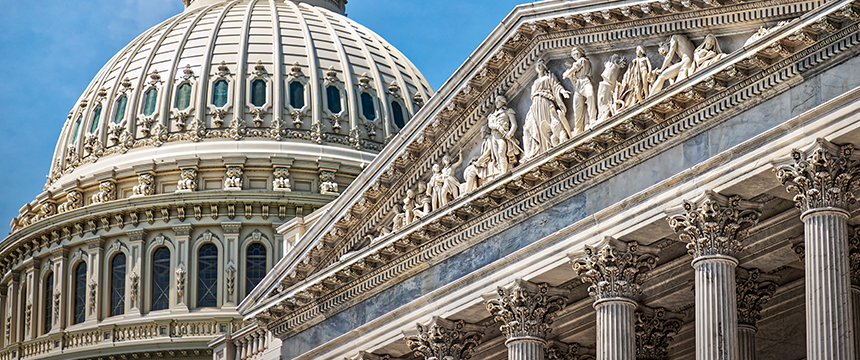
The demise of Chevron opens up new potential defenses in False Claims Act (FCA) cases.
On June 28, 2024, the Supreme Court, in Loper Bright Enterprises v. Raimondo, put an end to Chevron deference to agency interpretation of silent or ambiguous portions of statutes.[1] After Loper Bright, challenges to agency regulations will not look to Chevron when deciding how to interpret silence or an ambiguity in a statute. Instead, the Supreme Court decided it is for the judiciary to interpret a statute, not an executive branch agency.
Chevron was a 40-year bedrock of administrative law, and Loper Bright is a seismic shift to the landscape of agency enforcement. Loper Bright has the potential to shake up FCA cases, especially as creative defense attorneys apply the ruling to specific cases and facts.
To explore the issue, consider a hypothetical FCA case based on the facts of Loper Bright. To summarize, in the actual case, a fishing fleet operator sought to invalidate a regulation of the National Marine Fisheries Service (NMFS) that required operators to pay the cost of a fishery monitor, where only the regulation, and not the statute passed by Congress, required a monitor for Atlantic herring fishing and required the operator to pay $750 per day for the monitor. Let’s assume hypothetically that the regulation at issue required the fleet operator to expressly certify compliance with all regulations and the operator complied — except it did not pay the $750-per-day cost for the monitor.[2] Let’s also assume the operator then submitted a claim for a federal subsidy and certified regulatory compliance, despite not having paid for the monitor. Two years later, an FCA case brought by a whistleblower (a “relator”) is unsealed, alleging the operator knowingly filed a false claim for payment, in violation of the FCA, by falsely certifying compliance with all regulations.
Can the Operator Defend by Claiming the Regulation Was Invalid?
Loper Bright potentially opens a new line of defense if a defendant can argue a regulation or agency interpretation goes beyond the authorizing statute. In our hypothetical, the operator might argue it cannot have filed a false claim because the regulation itself was based on an incorrect and therefore invalid agency interpretation of the statute. If — as in Loper Bright itself — the imposition of the cost of the monitor was an improper agency action, the question would be whether there was in fact a regulatory requirement for the operator to have violated in the first place. And if — as in Loper Bright — a court were to agree with the defendant operator, there would be no statutory or regulatory requirement to serve as the basis for the alleged FCA violation. In other words, the operator should not have followed the NMFS regulation to begin with, and the certification he had complied with all (proper) regulations was not false.
The government surely would argue, however, that unless the regulation had been found unlawful by a court and set aside before the operator submitted his certification, our operator could not use Loper Bright as license to violate a facially-valid regulation.[3] Asserting disagreement with agency regulations would be an uncertain and risky defense that may not hold up when challenged. If the court were to find the regulation was not inconsistent with the statute, then our operator also may have violated the FCA.
A defendant may further contend that an invalid interpretation of statute reflected in an agency regulation lacks the force of law and thus is more akin to sub-regulatory guidance. The Justice Manual states FCA cases should not be based on agency interpretations that lack force of law.[4] This Justice Manual provision was published in the context of sub-regulatory guidance but, post-Loper Bright, defendants may argue a court owes no deference to the agency interpretation (whether in regulatory or sub-regulatory guidance) and could argue that DOJ’s own policy does not permit an FCA case based on an invalid regulation. The government may respond that an agency may condition payment on a company’s agreement to follow requirements that are not in a regulation — such as requirements in a contract. Still, given the Justice Manual policy, this further increases litigation risk to the government when at-issue regulations are based on improper agency interpretations of a statute.
The government further may argue the appropriate challenge to the NMFS regulation was not as a defense to an FCA lawsuit (nor simply to disregard the regulation) but rather to file a lawsuit challenging the problematic agency regulation and seeking a court order invalidating the action or regulation. But nothing seems to prevent the operator from staying the parallel FCA proceedings while challenging the improper regulation. That option may be viable even for longstanding regulations under the Supreme Court’s recent decision holding the statute of limitations for challenging agency actions runs from the date a plaintiff was injured, rather than from the date of the regulation’s promulgation.[5] At minimum, that course likely would give DOJ pause to avoid litigation risk. Loper Bright provides the argument and a reason for the government to decline intervention in an FCA case.
Potential Confusion with Inconsistent Judicial Interpretations
Without Chevron deference to an agency interpretation that applies nationally, there also is a risk of conflicting rulings arising from multiple challenges to a regulation. In our hypothetical, suppose there are other entities in the same boat as our operator, and the NMFS imposed a monitoring fee on salmon fisheries off the coast of Alaska, herring off the coast of Massachusetts, and crawfish in Louisiana. Consider if courts in those circuits ruled inconsistently, with one upholding the Agency’s interpretation, one finding it invalid, and one splitting the difference and applying a new rule altogether. What is the law of the land in jurisdictions that have yet to rule on the interpretation? Future defendants could not be found to have the required knowledge of falsity (“scienter”) if it does not pay the monitoring fee across the country because it is unclear as to the validity of the NMFS’ requirement. And, the existence of varying interpretations arguably makes the operator’s decision not to pay the fee rational, rather than reckless — undermining scienter.[6] This is a question to be determined as Loper Bright is applied to FCA cases.
What if a Court Invalidates a Regulation in an Existing FCA Case?
If a regulation with which an FCA defendant certified compliance was later invalidated, we expect the Justice Department and relators would be less likely to continue to pursue an FCA claim. Defendants who find themselves under scrutiny for a later-invalidated regulation should work to persuade the Government to dismiss the case even if the relator opposed. Here again, however, the existence of varied and conflicting rulings among district courts as to the proper interpretation of a statute could complicate the matter.
As reflected above, there are a different ways that the overturning of Chevron may play out in the context of FCA investigations and cases. At present, new and untested defenses are available.
For more information:
- What Does the End of Chevron Deference Mean for Federal Health Care Programs?
- The End of Chevron Deference and the Implications for the SEC
- Supreme Court Overturns FCA Scienter Cases
- Rising Importance of Sub-Regulatory Guidance in False Claims Act Cases
[1] As Justice Roberts summarized in the majority opinion in Loper Bright, the Court’s “Chevron doctrine requires courts to use a two-step framework to interpret statutes administered by federal agencies. After determining that a case satisfies the various preconditions we have set for Chevron to apply, a reviewing court must first assess ‘whether Congress has directly spoken to the precise question at issue.’ Id., at 842, 104 S.Ct. 2778. If, and only if, congressional intent is ‘clear,’ that is the end of the inquiry. Ibid. But if the court determines that ‘the statute is silent or ambiguous with respect to the specific issue’ at hand, the court must, at Chevron’s second step, defer to the agency’s interpretation if it ‘is based on a permissible construction of the statute.’ Id., at 843, 104 S.Ct. 2778.” Loper Bright Enterprises v. Raimondo, __ U.S. ___, 144 S.Ct. 2244 (2024).
[2] Entities that receive federal funding frequently must certify compliance with rules and regulations governing the pertinent federal program (e.g., Medicare program, grant requirements, etc.).
[3] A different scenario (discussed further below) is when a regulation is invalidated as unlawful sometime between the defendant certifying compliance with it and the present-day court action. We expect DOJ would be less likely to pursue such an action, given the even greater litigation risk to DOJ and fairness and propriety concerns.
[4] The current version of this Justice Manual provision grew out of the July 1, 2021, Garland Memo. See https://www.foley.com/insights/publications/2021/08/sub-regulatory-guidance-false-claims-act-cases/.
[5] See Corner Post, Inc. v. Board of Governors, 603 U.S. __ , 144 S.Ct. 2440 (July 1, 2024).
[6] We assume the defendant operator in fact had a justifiable reason to rely on the favorable judicial applications (despite the unfavorable ones), and this was not merely an “objectively reasonable” interpretation after the fact. See United States ex rel. Schutte v. SuperValu Inc., 598 U.S. 739 (2023) (where a claimant knew of a “substantial and unjustifiable risk” that its claims could be false and still submitted a claim, requisite scienter is present regardless of a statutory ambiguity).



